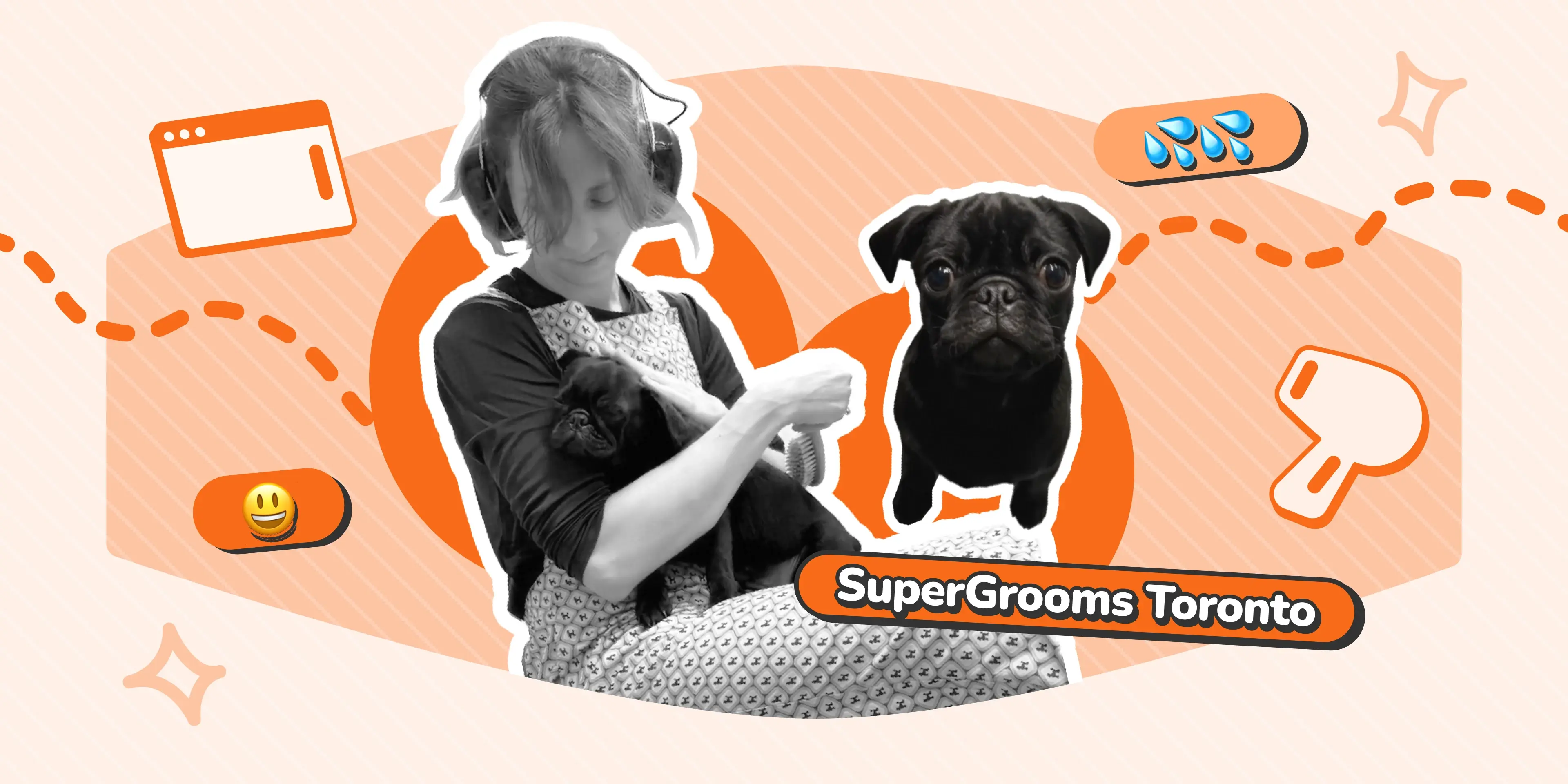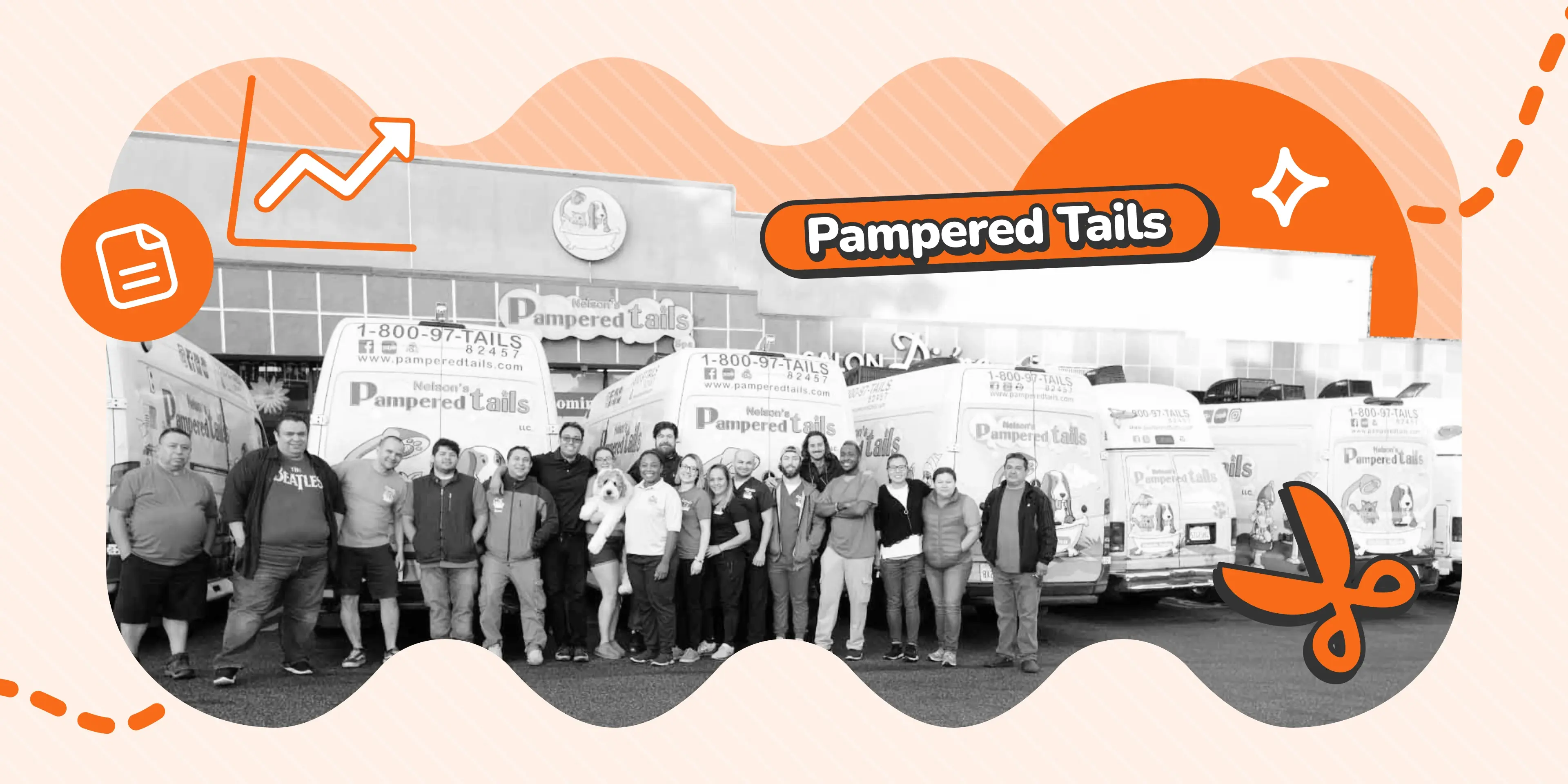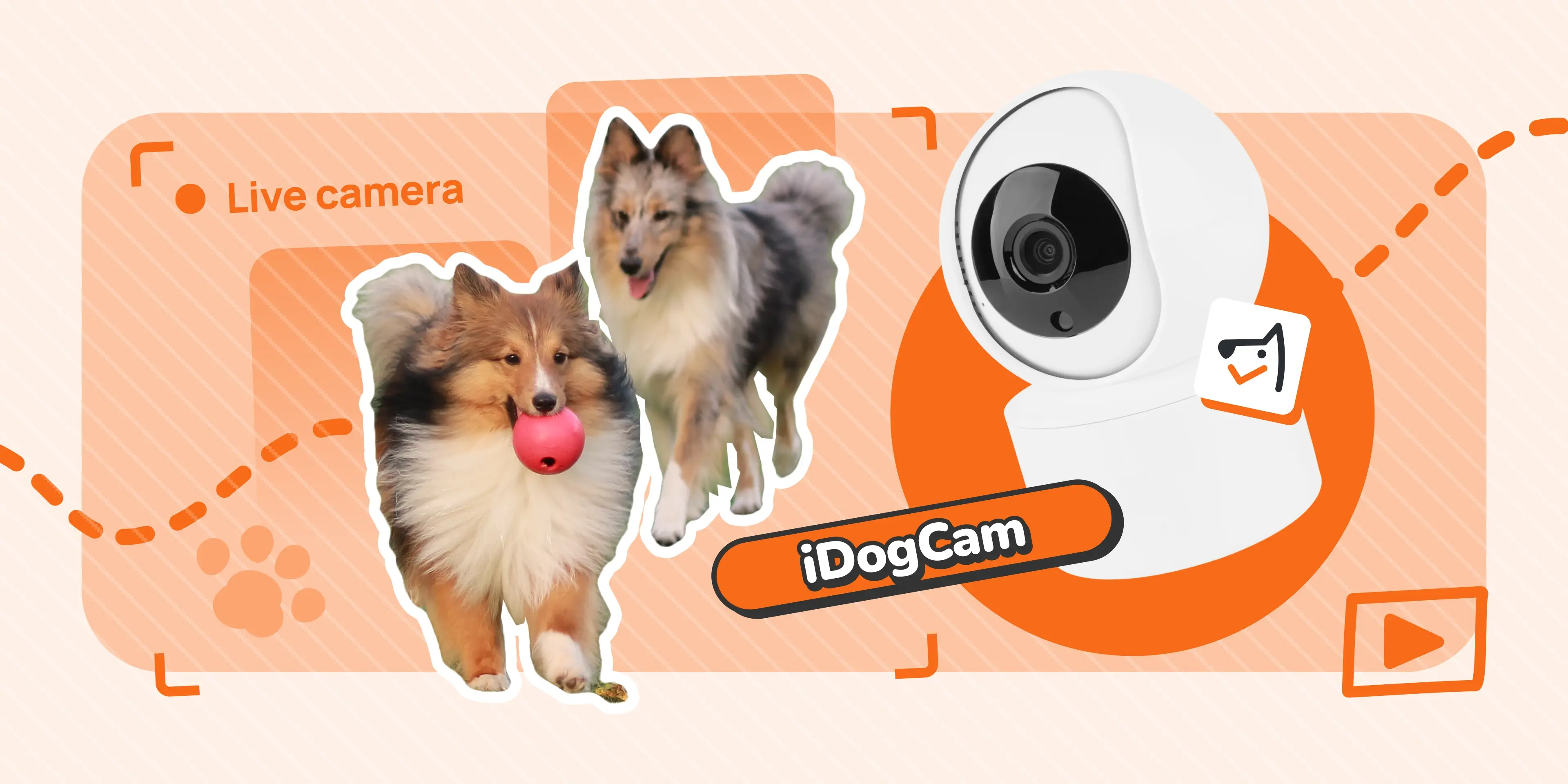Share this
The Ultimate Guide to Pet Grooming Business Websites
by MoeGo on Apr 19, 2023 1:11:53 PM
Your pet grooming website is crucial for marketing your business and making a paw-sitive impression with customers. It can attract new business and make it easy for them to learn more about your services and book their next grooming session with you.
This article will cover the best practices for creating an effective website for pet grooming businesses - from what to include on your website to SEO and more.
A successful website will showcase your brand and convert visitors into paying customers. With effective branding, you can also cater to the types of customers you want to attract.
Jump ahead:
What should I put on my dog grooming website?
Home Page
Your website's homepage is the first thing visitors see when they come to your pet grooming business website. Think of it like a digital business card, where you introduce yourself and showcase what you have to offer.
Since many potential customers make their buying decision based solely on your homepage, it's important to include everything they need to become paying customers. You should also make it easy for them to navigate to other pages on your site, in case they're interested in learning more.
To make your home page engaging and appealing, you want to include key elements, which we’ve outlined below:
A High-Quality Banner Image
Your homepage banner image (or “hero” image) is one of the first things visitors see when they come to your website. This image usually takes up a large portion of the page, directly below your top navigation bar.
It's important to choose an eye-catching and memorable image that conveys the essence of your brand - because first impressions really do matter! Pick an image that captures what you want customers to remember about your business and make it the hero of your homepage.
Consistent Branding
Consistency is key when it comes to branding, and your website is no exception. Studies show that it takes between 5 and 7 impressions for customers to remember a brand, and color alone can improve brand recognition up to 80%.
Use a consistent business logo, colors, and fonts throughout your website to reinforce your brand identity. And make sure you’re using the same consistent branding in your shop, van, social media, etc. This will help visitors recognize your business and differentiate you from competitors.
In short, you want customers to identify the website as distinctly your brand when they land on it.
Examples of Websites with Strong Branding
-
A compelling brand image doesn't have to be complex, and Throw Me a Bone exemplifies this fact. With a high-quality but minimalist aesthetic, the first image on this website is eye-catching but doesn't distract the customer from finding what they need in the top navigation, such as the services or booking links.

-
Hair of the Dog is another NYC based grooming business with a strong brand identity that carries through from their website to their vans. This consistency makes them immediately recognizable online and off and differentiates them from competitors.

-
America's Paw Spa brings a distinctly playful look and feel to their website, from images to the website font. What makes this brand identity successful is its consistency. The "spa" theme is carried through the images of dogs in bath towels and robes throughout the site, along with the use of "paw" puns and branded colors. It's also easy for customers to call, get a quote, and book their appointments from the home page of the website, which demonstrates attention and care for both current and future customers.

An Overview of Your Services
Include a clear and concise list of your services on the homepage, so they know exactly what to expect when they schedule an appointment. If your list of services is long and includes different pricing by weight, breed, etc., you can opt for a simplified menu on the home page and link to a more detailed list on a services page or your online booking page.
Customer Reviews and Testimonials
Few things are more persuasive than positive reviews from happy customers. Include a section on your homepage with testimonials from satisfied pet owners. Not only does this build credibility and trust with potential customers, but it also showcases your skills and customer service.
Pictures of Your Work
Visuals can speak louder than words—especially in the pet grooming industry. Include high-quality photos of your work on your homepage, showcasing different grooming styles and breeds. This can help potential customers envision how their own pets will look after a grooming visit.
Your Location
Make sure visitors can easily find information about your location. If you have a physical storefront, include your address and contact information on the homepage - ideally toward the top. You can also embed a Google map to help visitors visualize where you are located and get directions.
If you are a mobile groomer, include a list of the areas (cities, neighborhoods, or zip codes) you serve.
Booking Call-to-Action
A call-to-action is a button on your website that prompts people to take action. If you want new and returning customers to easily find your booking page, add a simple and clear “Book Now” or “Book Online” button at the top of your website, where it’s easy to see.
Make the button stand out by using a bright or contrasting color so that people can quickly find it. You might also include the button in the navigation menu that’s at the top of many websites. This helps people know where to go to book an appointment.
Links to Your Google Listing & Social Media
Including links to your online profiles (social media and Google listing) encourages customers to follow you on those platforms. It also helps search engines such as Google understand your business better by drawing a connection between your social media presence and your website.
About Us / Staff Bios
Your 'Meet the Team' or 'About Us' page is another important page on your pet grooming business website. It's where potential customers go to learn about who you are, your experience, and what makes you the best option for their pet grooming needs.
Here are some tips to help you create an effective 'About Us' page that engages potential customers and gives them an insight into your business:
Write Engaging Staff Bios
Your bio should be engaging yet professional. This doesn't mean it has to be boring or overly formal; instead, write in a conversational tone that shows off your personality and brand voice.
Use clear and concise language to describe your experience and qualifications, highlighting any relevant certifications or awards you may have received. Keep in mind that pet parents want to know they are leaving their furry friends in capable and caring hands, so make sure that comes across in your bio.
High Quality Staff Photos
Including staff photos on your “About” page is a must. This puts a face to the name and helps visitors feel more connected to your business and your team.
Make sure your staff photos are high-quality, well-lit, and taken in a professional setting. If possible, consider hiring a photographer to take some candid shots of your team at work. This helps potential customers see your team in action and highlights your professionalism.
With a good background and adequate lighting, though, you can still capture good headshots using a smartphone.
Highlighting Your Team as a People and Pet Groomers
Your 'About Us' page should showcase you not only as a pet groomer but also as a person. This might include your hobbies, interests, and why you’re passionate about grooming.
Highlighting your staff's personal stories and their love for animals can help visitors feel connected to your business. Ultimately, pet parents want to feel a sense of trust when they book their first grooming session with you; showing that your team shares their love for pets can go a long way.

Tips for Creating an Effective "About Us" Page
- Keep your bios conversational but professional
- Use high-quality staff photos (good lighting and background)
- Highlight your team's love and passion for animals
- Include any relevant certifications or awards
- Share personal stories and interests that make you stand out
- Make it easy for visitors to contact you by including clear calls to action
Online Booking Page
Your online booking page is where customers request to schedule services. Think of it as your online storefront. It also serves as an educational resource for potential customers to learn more about your grooming services and get specific pricing information.
If you don’t have a full website, a robust online booking page can serve the same purpose and can even rank on Google when people search for your business.
What your booking page should ideally include:
- Hours of operation
- A full menu of services and pricing
- Business features and amenities
- Payment types you accept
- Your phone number / contact details
- Your logo
- Your business description
- A link to your intake form
- Before and after photos

Gallery / Images
As a pet groomer, your work speaks for itself. Creating a well-curated gallery of pets you’ve groomed can be an effective way to sell your services to potential customers.
Here are some tips on how to create an effective gallery on your website:
- Categorize Your Work - If you have a lot of photos, categorizing will help visitors easily find the type of grooming service they need. For example, you can create categories for different breeds, coat types or cuts.
- Include Captions - Captions for each photo can provide additional context and detail about your grooming styles and techniques.
- Use Before and After Photos - These photos are a powerful way to highlight the transformation you can achieve for pets. Make sure to use clear and consistent angles to emphasize the difference from before to after.

Services & Pricing
Your services / pricing page is crucial for visitors to determine if they want to book an appointment. If you have a robust online booking page, creating a separate services and pricing page may not be entirely necessary. However, many customers will want to know pricing before they book, so including a page they can access before clicking “book now,” for example, may improve user experience on the website.
Here are some tips on how to create an effective services and pricing page:
- Pricing Table by Breed / Weight - If you have specific pricing for certain breeds or pricing by weight, consider these individual “services” so customers won’t expect a large dog to be groomed for the price of a small one.
- Pricing Ranges - If you don't want to include a full table of prices by breed and weight, you can also include pricing ranges to give customers an idea of how much it'll cost to groom their pup in a more succinct format.
- Additional Information - Include any other information visitors may need, such as your cancellation policy or appointment booking process. Pricing add-ons, such as additional fees for de-matting, should also be outlined on this page.

SEO Best Practices for Your Pet Grooming Website
Search engine optimization (SEO) can improve the visibility of your pet grooming website in search engine results. By following best practices, your website stands a better chance of being seen by potential clients who are searching for pet grooming services near you.
Page Title & Description
Sometimes called “meta title and description” or “SEO title and description” these two elements are what potential customers will see in search results before the click on your site. The title and description should be updated for every important page on your website - but most importantly the Home Page. This title is not the same as the header on your home page. Instead, it is only used in search results and in the browser tab, like this:

Your page title and description should accurately reflect the content on the page and include your business name, where you are located, and what your business does. The title is especially important because it is one of many factors Google uses to rank websites in Google search.
Most page titles are comprised of three elements:
- A brief description of the page
- A separator (a pipe, colon, or dash)
- The business name
Using this formula, the meta title for your home page, for instance, could be something like this:
[CityName] Mobile Pet Grooming | [Name of Business]
And your description could be something like this:
[Business Name] offers pawsitively luxurious pet grooming services in [City] for pups of all sizes. Schedule your next grooming session with us today!
Page Headers
Page headers (not to be confused with the page title) are the larger text at the top of the page that describes what the page is about. The primary (and most important) header on the page is the H1 (Header 1), and should succinctly describe the content of the page.
So, the H1 for your “Meet the Team page could be “Meet the Team” or “About [Name of Business].”
You can also use subheadings (H2s and H3s) to further organize your content and make it easy for readers to scan the page and find what they’re looking for. So, your “About Us” page could be structured like this:
- About [BusinessName] ← H1
- Meet [GroomerName] ← H2
- Our Vision ← H2
- How We Got Started ← H2
Keep in mind that there should only be one H1 tag per page, but multiple subheadings are encouraged if the content needs to be broken down into smaller, more readable sections.
💡Tip: You can use an AI tool like ChatGPT to help you create this type of content. Just make sure to include all of the details and facts you need on the page, and ask the AI to rewrite it in the form of an About Us page for your website. You may need to tweak the content afterward or fix factual errors, but using an AI can still save time - especially if you don’t enjoy writing.
Content
Write original content that is both informative and engaging. Avoid “keyword stuffing” (adding keywords about pet grooming just to rank on Google) or copying text from other sources. This could decrease your chances of ranking when customers search for pet groomers. Keep sentences short and focus on providing value to readers with helpful information about your grooming services.
Images
Optimizing images is important for both user experience and SEO performance. Include descriptive alternative text (alt-text) with each image uploaded on your site – this will make it easier for search engines to find them as well as increase accessibility for users with disabilities who might rely on screen readers to access content on your site.
Links & Website Navigation
Website navigation makes it easy for customers (and Google) to find your website pages. Try to include all of your important pages in your website’s top navigation, if you can. If you are unable to do that, consider using a sitemap and linking it from the footer of your website to make it easier for people to find if they need it.
Backlinks
A backlink, or inbound link, is a link from one website to yours. Backlinks help search engines understand the relevance and quality of a website’s content, and can help your website rank better in Google and also get more visibility.
That said, getting backlinks is an advanced SEO technique and isn’t always easy - especially for local businesses. One way for pet groomers to acquire links to their website is through community involvement. Local event sponsorship is one way to acquire links, since many organizations will link to your business website if you donate or sponsor an event. Running charity events or food drives is another way to generate “newsworthy” attention from local news outlets and, even though links and exposure are never guaranteed, can be an effective way to get links and additional exposure for your business over time.

How Specialization Plus System Built a Thriving 1:1 Grooming Model at SuperGrooms

How Pampered Tails Risk-Proofed Growth with PBI & MoeGo

How Hound HQ Doubled Client Base with Transparency as Growth Engine
Share this
- December 2025 (1)
- November 2025 (3)
- October 2025 (3)
- September 2025 (2)
- August 2025 (11)
- July 2025 (11)
- June 2025 (1)
- May 2025 (7)
- April 2025 (13)
- March 2025 (6)
- February 2025 (4)
- January 2025 (8)
- December 2024 (6)
- November 2024 (6)
- October 2024 (3)
- September 2024 (1)
- August 2024 (2)
- July 2024 (1)
- May 2024 (2)
- April 2024 (1)
- March 2024 (3)
- February 2024 (3)
- January 2024 (2)
- December 2023 (6)
- November 2023 (7)
- October 2023 (7)
- September 2023 (8)
- August 2023 (7)
- July 2023 (3)
- June 2023 (2)
- May 2023 (4)
- April 2023 (2)
- March 2023 (9)
- February 2023 (1)
- January 2023 (1)
- December 2022 (1)
- November 2022 (5)
- October 2022 (1)

